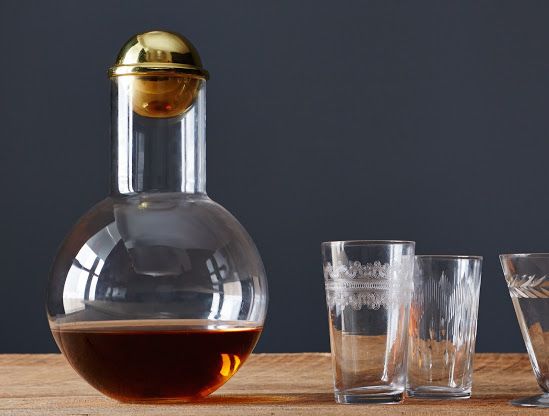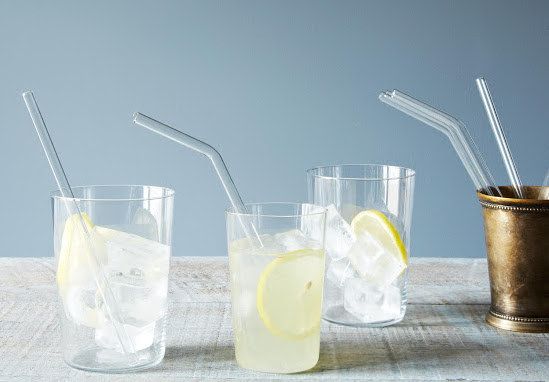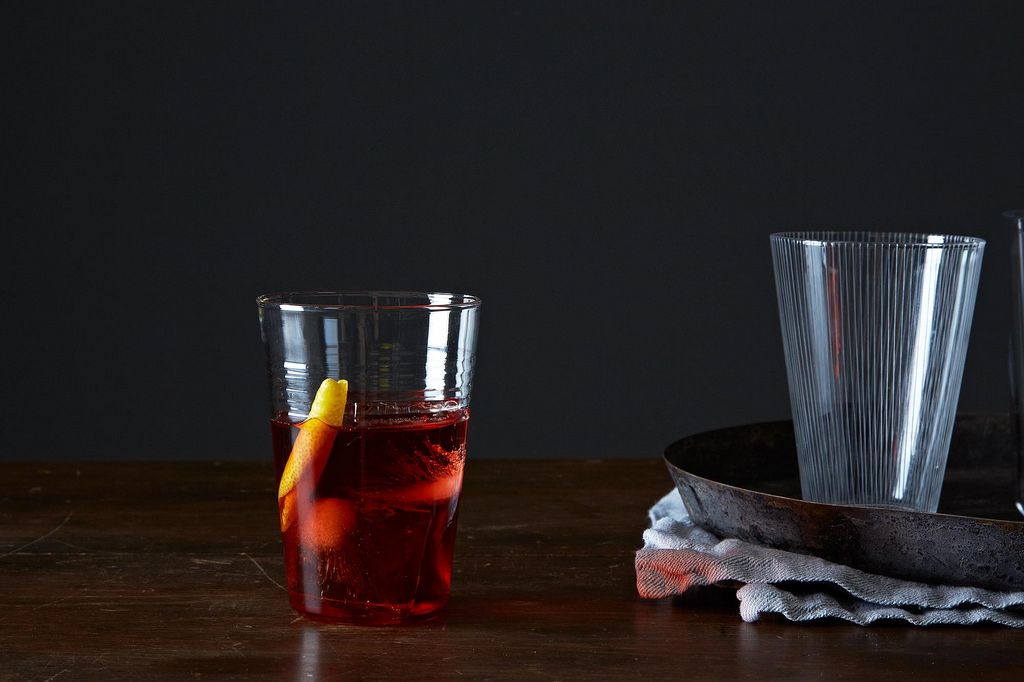When he's not busy running the cocktail program at New York City's Maialino, Erik Lombardo is giving us the rundown on all things spirits -- and showing us the best ways to drink them.
Today: Making drinks en masse is easier than ever with some strategic batching.

At the risk of giving myself too much credit, the chances are good that if you’ve been following this column, then you make the best cocktails in your particular group of friends. Top 3 for sure. Even if correlation doesn’t prove causation, I’m still taking credit. But as my Uncle Ben once taught me (or was it Voltaire?): “With great power comes great responsibility.”
By this point you may have found yourself spending more time in the kitchen shaking and mixing than you do actually spending time with your guests. In the interest of changing that, consider batching.
The principle is easy: Mixing a cocktail is a lot like cooking, and much like any recipe, the recipe for a cocktail can be scaled up or down. Take your basic Manhattan. That recipe might as well read: 2 parts rye, 1 part vermouth, and as many dashes of bitters as ounces of rye (or up to twice that amount, to taste). In fact, this is how many cocktail recipes of the late 19th and early 20th centuries read, as it took quite a while for measurements to standardize from one place to another. What's important is the ratio of the ingredients, not the total amount.

Now, this may seem like common sense, but there is a flaw in the time-saving aspect of taking this approach: You still need to spend a bunch of time stirring the Manhattan (remember dilution?), so the only time you’re saving is in measuring your spirit. With a digital scale, however, you can cut the time it takes you to serve a Manhattan to the time it takes to pour it out of a bottle. Here's how to do it:
First, set up your equipment. You’ll need everything you would normally need to make a cocktail, plus a measuring cup big enough to handle the larger amount you’re going to be making, and a bottle to put it all in. (If you’re making a large enough quantity of one thing, just save the original bottles the spirits came in and refill them once they’re mixed.)
- Place your cocktail glass on the scale and tare it so the scale reads zero. Work in grams if you can; it’s more precise that way.
- Next, without adding ice, add one cocktail’s worth of ingredients to the glass and record the weight.
- Empty the glass into a mixing vessel of your choice and replace the glass on the scale. It should read 0 again.
- In the mixing glass, add ice to your cocktail ingredients and stir to perfection.
- Strain your cocktail into the glass that is sitting on the scale. Record the weight.
Subtract the weight of the cocktail without ice from the weight of the cocktail that has been stirred: This will be the amount of water you'll need, per cocktail. Treat water as your final ingredient, and scale it up alongside everything else.

In the interest of science, I made myself a cocktail -- below are the measurements, as an example:
- My pre-stirred Manhattan weighed 78 grams.
- After stirring and straining it weighed 118 grams, meaning 40 grams of water was added in the form of melted ice (water makes up approximately a third of any given cocktail, so use good ice!).
-
So, if I'm making a Manhattan for 6, I should use: 312 grams of rye (or 12 ounces), 156 grams of sweet vermouth (or 6 ounces), 240 grams of water (just short of 9 ounces) and 24 dashes of bitters. This mixture can be bottled, buried in ice (or better, thrown in a freezer) and then poured into chilled glasses and garnished as a complete cocktail.
This works best with spirit-only cocktails (think Negronis, Boulevardiers, Manhattans) since cocktails that have fruit juice require shaking (negating the advantage of adding water beforehand) and can’t be put in a freezer. (They’ll turn to slush…which is great if you want a whiskey sour slushie!) So the next time you get invited to a friend’s house for dinner, instead of bringing yet another bottle of Cava, why don’t you treat them to a bottle of a perfectly mixed cocktail?
Need something to hold your perfectly-batched cocktails? Head to Provisions -- we have just the thing.
Photos by James Ransom




See what other Food52 readers are saying.